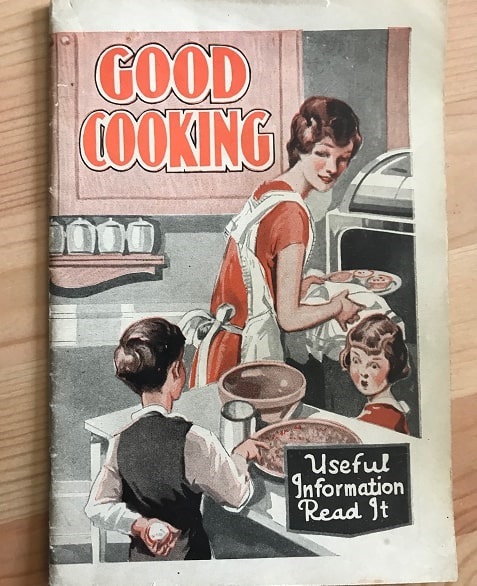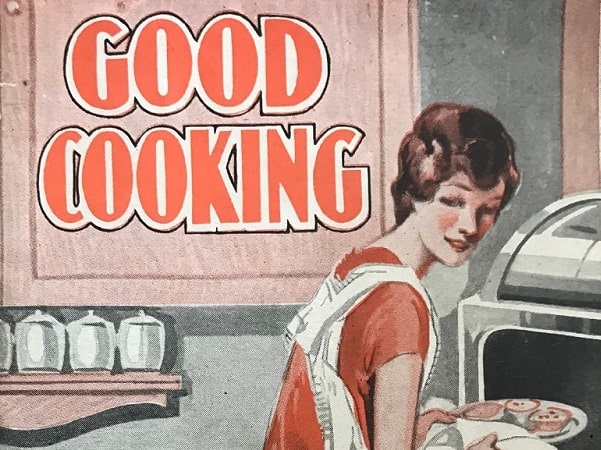Introduction: In this article, Gena Philibert-Ortega finds a treasury of genealogy information in a most unexpected place. Gena is a genealogist and author of the book “From the Family Kitchen.”
Friends, do you ever feel tired and worn out? Do you feel like you’ve lost your pep? Looking for where your energy and motivation went to?
Personally, when I feel this way I may take a nap, drink some coffee, or have my doctor run a test for thyroid or vitamin D deficiencies – but in our ancestors’ time they may have relied on a “quick fix,” and they would have found it advertised in magazines and newspapers.

That quick (quack) fix was patent medicine. A patent medicine is “a nonprescription medicinal preparation that is typically protected by a trademark and whose contents are incompletely disclosed,” according to Merriam-Webster. “Patent medicine is often used to refer to a product (such as an elixir, tonic, or liniment) that was marketed as a medicine in the U.S. during the 1800s and early 1900s but was typically of unproven effectiveness and questionable safety.” (1) Those bottles of wonder cures often had alcohol, opium or other drugs, or useless mixes.
However, those patent medicines often relied on customer testimonials for their marketing. And customer testimonials translate to names. Names are something that we genealogists love to find.
In a previous GenealogyBank blog article, I discussed one of the most famous compounds and the genius behind the marketing of that self-named medicine, Lydia Pinkham (see The Marketing Finesse of Mrs. Lydia E. Pinkham). She relied on testimonials from real women to sell her products – and she wasn’t the only marketer who did so.
Recently a friend gifted me a recipe booklet titled Good Cooking because he knew I collected cookbooks – but it turned out it was really a marketing piece for a patent medicine: “Dr. Pierce’s Favorite Prescription.” Much to my surprise, it turned out to be a genealogical treasure!
Dr. Pierce (1840-1914)
First let’s look at who Dr. Pierce was. According to my booklet, R. V. (Ray Vaughn) Pierce, M.D., not only sold medicines like his “Golden Medical Discovery” and his “Favorite Prescription,” but he ran an Invalid’s Hospital in Buffalo, New York.
Dr. R. V. Pierce’s medications were mostly geared toward women and their various problems; however, he peddled all sorts of treatments from pills to light therapy. Basically, any health problem you had, he had a solution. Of course, what didn’t cure you probably made you not care as much, since the medicines included alcohol and/or opium. (2)
Dr. Pierce graduated from Eclectic Medical College in Cincinnati, Ohio, and in addition to his medical career he also served in the New York State Senate (1878-1879) and the U.S. House of Representatives (1879-1880). In his retirement he founded a game preserve in Florida. (3)
Good Cooking
My copy of Good Cooking (no date) is a marketing booklet disguised as a recipe booklet. Not surprisingly, it was not the only publication Dr. Pierce used to peddle his wares. A search online shows another booklet called Dream Book Bridal Superstitions that amongst other things provides information about how to tell when you will marry – as well as the solution to various female ailments. Happiness in the Home and Safety First are additional titles that combine some information with advertisements. His book Common Sense Medical Advisor, which does read more like a book, can be found on Internet Archive.
Does Good Cooking have actual recipes? Well, there are some recipes for foods like Potato Soup, Soda Crackers, and Strawberry Shortcake, but the majority of the booklet is advertising, testimonials and a two-page form to fill out for a free consultation.
However, if you wade through the advertising, you will find antidotes for poisons, first aid instructions, cleaning recipes, cooking measurements, and recipes for the invalid and sick.
As a genealogist, the testimonials caught my attention.
Women’s Testimonials
What I focused on as I looked through this booklet were the names, addresses – and, in some cases, photos – of women who made up the booklet’s testimonials. (4)
I started to wonder if these were real women or models. After all, it’s not unusual to find that “testimonials” given in various media forms today are from paid actors. So, I transcribed the names in the booklet and started searching for them in the U.S. census and GenealogyBank’s Historical Newspaper Archives to see what I could discover. (5)
Mrs. Pearl Johnson
Mrs. Pearl Johnson’s testimonial had the address of 206 East Carlton St, Ontario, California, so I decided to search for her in the 1920 U.S. Census for Ontario, San Bernardino, California.
I didn’t find Pearl in the 1920 census, but a search in the 1930 census did find a Pearl A. Johnson living with her husband (Ervin H. Johnson) and father (Patrick J. Jennings). According to the census she had only been married about nine years, thus the reason I didn’t find her in 1920 with the Johnson surname.
If this is the Pearl Johnson in the Good Cooking book, we now know her name, her address, and her husband’s and father’s names. In addition, the booklet mentions that she had a job. That’s not documented in the census, but in my experience it’s not unusual to find working women listed in the census as having no occupation even when they did.
Are these two Pearl’s the same? I’m not 100% sure but it’s a good possibility that could be further explored. Pearl Johnson is not an unusual name so it could be a case of same name/different person. If it is the right Pearl Johnson, then the booklet has to have been published after 1920.
More Testimonials
Page 9 of the booklet contains not just one but three testimonials with photos.
Mamie Hartgrove
Mamie Hartgrove of Louise Mill, Charlotte, North Carolina, is one of these. Interestingly enough, Mrs. Hartgrove not only appears in the booklet but her testimonial was used in at least two different versions in historical newspapers.
In the 1930 census we find her in Charlotte, North Carolina, the wife of a cotton mill worker (along with most of the people enumerated on this census page). As of this census she has been married 10 years and has 2 sons. Her address in the booklet says simply “Louise Mill” which was a cotton mill in Charlotte that closed in 1957. It is now on the National Register of Historic Places and you can read more about it on the National Park Service website.
I found Mamie in newspaper advertising from 1931 through 1933. In the newspaper testimonials, the text is almost identical to the booklet testimonial and asks the reader if they are nervous and weak (or lack strength).
Dorothy Winegar
Not all of the women featured in the booklet suffered from weakness and nervousness. In the case of young Miss Dorothy Winegar of Alden, New York, it was her complexion that was problematic. “For two years I was embarrassed by the condition of my skin, the eruptions that came out on my face would not clear up even though I used ever outward application that my mother gave me to use.” When she took Dr. Pierce’s Golden Medical Discovery it acted as an “internal cleanser and enricher of blood” that, the advertisement claimed (not surprisingly), cleared up her complexion.
While no ages appear in these testimonials, the subject of Dorothy’s testimonial hints at acne and it mentions her mother, so I assumed from that and her marital status (single) that she was a teenager. In the 1930 U.S. Census there is a Dorothy Winegar living on Kellow Street in Alden, New York. This appears to be an exact match for the testimonial.
The census shows she’s living with her parents and her siblings. In 1940 I find her again living with her parents and siblings as a 25-year-old, but this time she has an occupation: she works in a retail bakery.
Other Happy Customers
After doing some research and finding these women in the census and historical newspapers, I think it’s a possibility that everyone named in the booklet is a real person. Whether their experience with Dr. Pierce’s remedies are exactly as they claimed is debatable. Perhaps a monetary payment or freebies of some kind helped them provide the information Dr. Pierce’s marketing department needed.
This booklet provides genealogically rich data including names and addresses. Additional information about medical ailments may or may not be correct. Names and addresses in the booklet are:
- Emma Christian, 80 N Front St., Kingston, New York
- D. Collins, 321 W Seventh Street, Winston-Salem, North Carolina
- John Couch, 2110 6th Street, Detroit, Michigan
- Evelyn Dunn, 1247 Stimson Ave., Detroit, Michigan
- Augusta Eberle, 223 Franklin Street, Tonawanda, New York
- Harry Glaze, 213 Kimball Street, Elgin, Illinois
- P. Grau, 422 N Mary St., Lancaster, Pennsylvania
- Mamie Hartgrove, Louise Mill, Charlotte, North Carolina
- Millie Holmes, 601 Homewild Ave., Jackson, Michigan
- Pearl Johnson, 206 East Carlton St., Ontario, California
- W. S. Kinsman, 9 N Pine St., Colorado Springs, Colorado
- Gertrude Leach, 410 N Mulberry St., Lancaster, Pennsylvania
- Wm. Lett, 1804 7th Ave. N, Nashville, Tennessee
- L. F. Oliver, 1505 E 66th St., Cleveland, Ohio
- Grace Riley, 1015 Woodward St., La Porte, Indiana
- Howard Sanford, 2449 Cedar Ave., Minneapolis, Minnesota
- Melvin H. Schoenberger, 635 E Marion Street, Lancaster Pennsylvania
- O. Seger, 2930 Pillsbury Ave., Minneapolis, Minnesota
- Effie Silvey, 5905 Hough Ave., Cleveland, Ohio
- Henry Spaid, 210 High Street, Hagerstown, Maryland
- M. V. Spillman, Box 85, Colonial Beach, Virginia
- Hazel Swift, 410 Tyler St., La Porte, Indiana
- H. E. Thurmond, 1219 Dyal St., Jacksonville, Florida
- Amanda Visger, 1851 Wisconsin Ave., Beloit, Wisconsin
- Miss Dorothy Winegar, Box 187, Kellow Street, Alden, New York
- Harry Pryor, 309 E Robidoux St., Joseph, Missouri
Genealogy Is Everywhere!
So, why does this matter to genealogists? Many of the sources we look to are lists of names and addresses. In this case we have names and addresses, as well as additional information like occupation or possible health condition. The only difference between this and a “names list” like a city directory is that this unusual source is more difficult to find.
__________________
(1) “Patent Medicine,” Merriam-Webster (https://www.merriam-webster.com/dictionary/patent%20medicine: accessed 19 July 2021).
(2) “Nickell collection of Dr R.V. Pierce Medical Artifacts,” (https://nyheritage.org/collections/nickell-collection-dr-rv-pierce-medical-artifacts: accessed 10 August 2021).
(3) “Ray V. Pierce,” Wikipedia (https://en.wikipedia.org/wiki/Ray_V._Pierce: accessed 10 August 2021).
(4) The majority of names listed in the booklet are women. Only four men provided testimonials, none of which are pictured in the booklet.
(5) There was no date on the booklet, but judging from the women’s hairstyles I assumed that the booklet was published after the World War I era, perhaps the 1920s. Many of the women had short bob-like haircuts. So, I decided to start my census search with 1920.
